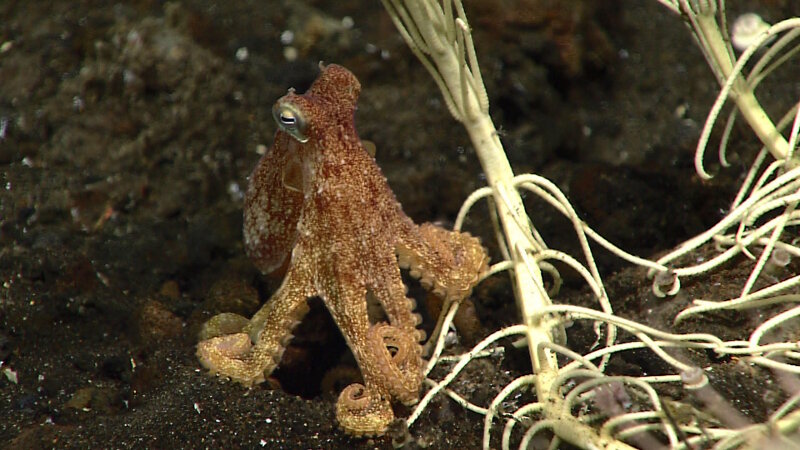Dive 19 took place on Esmeralda Crater, an active submerged volcano that is part of the Vents Unit of the Marianas Trench Marine National Monument. In 2006, a team of NOAA scientists tried to investigate the crater, but the water was so murky from iron particles associated with venting that they were only able to view the crater walls. We returned to this site for our final dive of Leg 1 to see if the volcano is still active and to look for signs of recent hydrothermal venting. We began the dive in the center of the crater at about 330 meters, intending to make our way to a small ridge within the crater. While there were definitely particulates in the water, shore-based scientists from the 2006 expedition noted that it was more clear than a decade before. The heavily sedimented, orange-hued seafloor was composed of iron precipitate. The water column near the seafloor was teeming with small, transparent fish that we believe to be the hatchetfish Araiophos eastropas. We also saw many crinoids, tube anemones (cerianthids), a pagurid hermit crab with a piece of wood instead of a shell, and a nudibranch. As we moved toward the small ridge, we encountered an extinct hydrothermal chimney that was likely composed of iron oxides, which had several codlings (Physiculus or Gadella) swimming around it. Soon after we found the chimney, the currents picked up and visibility degraded to the point that we needed to move to another site. We transited through the water column, moving to our back-up site surveying the eastern crater flank for another possible area of hydrothermal activity. While we did not see any signs of venting, we did see anemones, sea pens, squat lobsters, black corals (antipatharians), many brilliant bluetilefish (Hoplolatilus) that are possibly a new species, a pufferfish (likely Lagocephalus) that appeared to be hunting the tilefish, two batfish (HalieuteaI), and a tiny yellow octopus.
